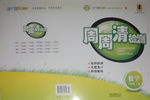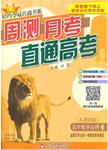题目内容
阅读理解
Each year, road accidents kill a million people and injure millions more.The economic costs are
greatest for developing countries.Earlier this year, the United Nations called for a campaign to improve
road safety.
One way to avoid accidents is better driving.Another is better roads and bridges.Engineers in the
United States have designed ten new concrete mixtures that they think could make bridges last longer.
Professor Paul Tikalsky leads the experiments by a team at Pennsylvania State University.He says
bridges made of concrete now last about twenty-five to thirty-five years.But he says the new mixtures might extend that to seventy-five or even one-hundred years.
Concrete is made of stone, sand, water and cement (水泥). The materials in the cement hold the
concrete together.Ancient Romans built with concrete.Yet strengthened concrete bridges did not appear
until the late 1800s.People keep looking for new ways to improve concrete.Professor Tikalsky says it is
one of the most complex of all chemical systems.
The new mixtures designed by his team contain industrial waste products.He says these make the
concrete better able to resist damage from water and salt over time.One of the products is fly ash.This is
released into the air as pollution when coal is burned.
Professor Tikalsky says particles (颗粒) of fly ash are almost exactly the same size and chemical
structure as Portland cement.This is the most costly material in concrete.So using fly ash to replace some
of it would save money.
Over the next two years, engineers will study ten bridges in Pennsylvania.These were built from the
different cement mixtures designed by Professor Tikalsky's team.He says longer-lasting bridges could
save the state more than 35 million dollars a year.And he says the materials would be environmentally
friendly.
The federal government is paying for part of the research.Engineers anywhere can use the technology.
government is paying for part of the research.Engineers anywhere can use the technology.
Professor Tikalsky says some of the ideas have already been put to use in China, the Philippines and
some of the ideas have already been put to use in China, the Philippines and
other countries.
greatest for developing countries.Earlier this year, the United Nations called for a campaign to improve
road safety.
One way to avoid accidents is better driving.Another is better roads and bridges.Engineers in the
United States have designed ten new concrete mixtures that they think could make bridges last longer.
Professor Paul Tikalsky leads the experiments by a team at Pennsylvania State University.He says
bridges made of concrete now last about twenty-five to thirty-five years.But he says the new mixtures might extend that to seventy-five or even one-hundred years.
Concrete is made of stone, sand, water and cement (水泥). The materials in the cement hold the
concrete together.Ancient Romans built with concrete.Yet strengthened concrete bridges did not appear
until the late 1800s.People keep looking for new ways to improve concrete.Professor Tikalsky says it is
one of the most complex of all chemical systems.
The new mixtures designed by his team contain industrial waste products.He says these make the
concrete better able to resist damage from water and salt over time.One of the products is fly ash.This is
released into the air as pollution when coal is burned.
Professor Tikalsky says particles (颗粒) of fly ash are almost exactly the same size and chemical
structure as Portland cement.This is the most costly material in concrete.So using fly ash to replace some
of it would save money.
Over the next two years, engineers will study ten bridges in Pennsylvania.These were built from the
different cement mixtures designed by Professor Tikalsky's team.He says longer-lasting bridges could
save the state more than 35 million dollars a year.And he says the materials would be environmentally
friendly.
The federal
 government is paying for part of the research.Engineers anywhere can use the technology.
government is paying for part of the research.Engineers anywhere can use the technology.Professor Tikalsky says
 some of the ideas have already been put to use in China, the Philippines and
some of the ideas have already been put to use in China, the Philippines and other countries.
1. Why did the United Nations launch the campaign?
A. Because the United Nations wanted to reduce road accidents and economic costs.
B. Because two million people were killed in the accidents.
C. Because engineers wanted to design ten new concrete mixtures.
D. Because the United Nations made bridges of the new mixtures which could last for about
20 to 35 years.
B. Because two million people were killed in the accidents.
C. Because engineers wanted to design ten new concrete mixtures.
D. Because the United Nations made bridges of the new mixtures which could last for about
20 to 35 years.
2. What does the underlined word "This" in the sixth paragraph refer to?
A. Fly ash.
B. Portland cement.
C. Sand.
D. Chemical.
B. Portland cement.
C. Sand.
D. Chemical.
3. Which of the following statements is TRUE?
A. Ten new concrete bridges have already been built in the United States.
B. A new concrete bridge could last 50 more years than an ordinary concrete one.
C. People didn't know how to build with cement until the late 1800s.
D. Water and salt won't do any damage to bridges over time.
B. A new concrete bridge could last 50 more years than an ordinary concrete one.
C. People didn't know how to build with cement until the late 1800s.
D. Water and salt won't do any damage to bridges over time.
4. What can we conclude from the passage?
A. Engineers ha ve to pay a lot of money to use the new bridge technology.
ve to pay a lot of money to use the new bridge technology.
B. Pennsylvania State University is paying all the money for the research.
C. Bridges built with fly ash are cheaper than common bridges.
D. Fly ash is much more expensive than Portland cement.
 ve to pay a lot of money to use the new bridge technology.
ve to pay a lot of money to use the new bridge technology.B. Pennsylvania State University is paying all the money for the research.
C. Bridges built with fly ash are cheaper than common bridges.
D. Fly ash is much more expensive than Portland cement.
5. What does the passage mainly tell us?
A. The causes of road accidents.
B. The advantages of fly ash.
C. The measures of avoiding road accidents.
D. Latest information about long-life concrete bridges.
B. The advantages of fly ash.
C. The measures of avoiding road accidents.
D. Latest information about long-life concrete bridges.
1-5: ABBCD

练习册系列答案
 周周清检测系列答案
周周清检测系列答案 轻巧夺冠周测月考直通高考系列答案
轻巧夺冠周测月考直通高考系列答案
相关题目
| 阅读理解. | ||||||||||||
| Each year a million cows in Africa die from east coast fever.The disease is spread by tick bites.Young cows are most at risk;they can die within days.Farmers and herders can lose up to half or more of their calves to east coast fever. The disease is widespread in eleven countries.And experts say it now threatens ten million more animals in new areas including southern Sudan. Researchers first developed an experimental vaccine against east coast fever thirty years ago.The vaccine works by a process called "infection and treatment".The animals are infected with whole parasites and treated with antibiotics at the same time.This keeps the disease from developing. Controlling east coast fever has meant a better life in areas that have gotten the vaccine. For example,the vaccine has been available for a group of Maasai herders in northern Tanzania for about seven years.They used to lose threefourths of their newborn calves each year.Now,most survive.As a result,many people have extra cattle to sell,and use the money to pay for school for their children. But making the vaccine more widely available-especially in rural areas-has been difficult. Farmers have been using supplies produced in the nineteen nineties.Recently there was a shortage.The International Livestock Research Institute made one million doses at the request of African officials.But that supply is only temporary.Another problem is that the vaccine must be kept extremely cold. Now,the nonprofit Global Alliance for Livestock Veterinary Medicines is trying to expand production and lower the cost.GALVmed spokesman Hameed Nuru says mobile phones have helped lower some barriers to distribution. HAMEED NURU:"Now,with the advent of cellular technology,most of the people we do reach,such as the Maasai pastoralists,they all have cell phones.And they now call the delivery agent who can now come and meet them at a particular place and do the vaccination for them." The vaccine is not cheap.But Hameed Nuru says the herders get together to sell a bull and use the money to vaccinate all their animals.They understand that they are getting value for their money:A cow is worth nearly twice as much if it is vaccinated. A goal is to have local people develop businesses supplying the vaccine. HAMEED NURU:"People are now seeing that they can actually make a business from supplying this vaccine and getting out to the very rural areas where there is a market for this." The efforts are supported by the Bill and Melinda Gates Foundation and the British government. East Coast Fever
|
| 阅读理解 | ||||||||
| Each year there is an increasing number of cars as millions of new cars are produced in America. Americans will not live without cars! However, some have realized the serious problem of air pollution by cars. It is necessary to find ways to solve the problem of air pollution. One way to clean the air is to build a new kind of clean car. That’s what several of the large car factories are trying to do. But to build a clean car is easier said than done. Progress in this field has been slow. Another way is to take the place of the car engine by something else. Engineers are now working on it. Many makers believe that it will take years to develop a practical model for us. To prevent the world being polluted by cars, Americans have to make some changes in the way of their life. They have to cut down on the number of their cars and are encouraged to travel and go to work by bike. But this change does not come easily. Many workers may find themselves without jobs if a car factory closes down. And the problem of their pollution would become less important than that of unemployment. Americans may live a happy but sad life for a long time because of the car problem. Cars and Pollution in American | ||||||||
|